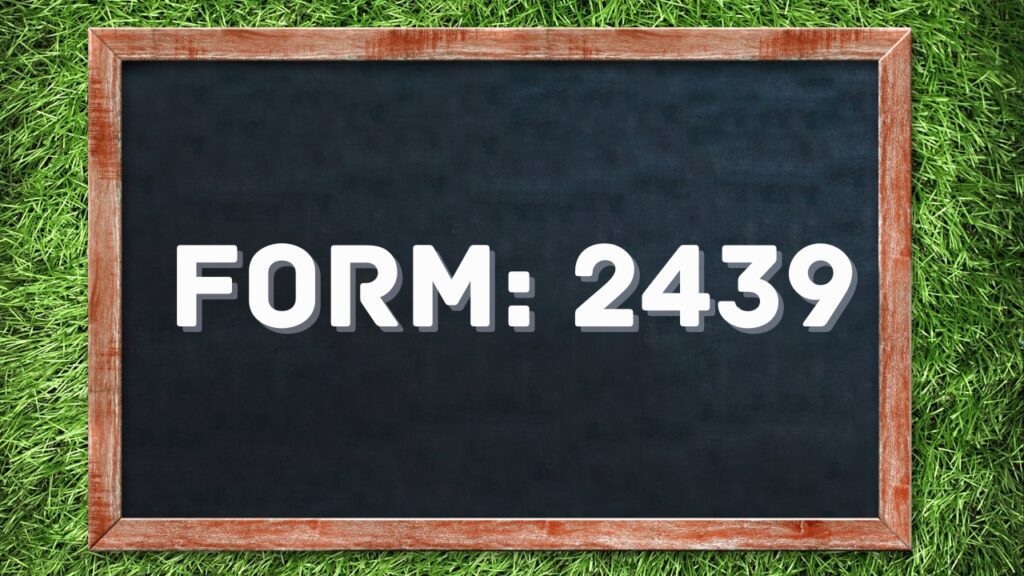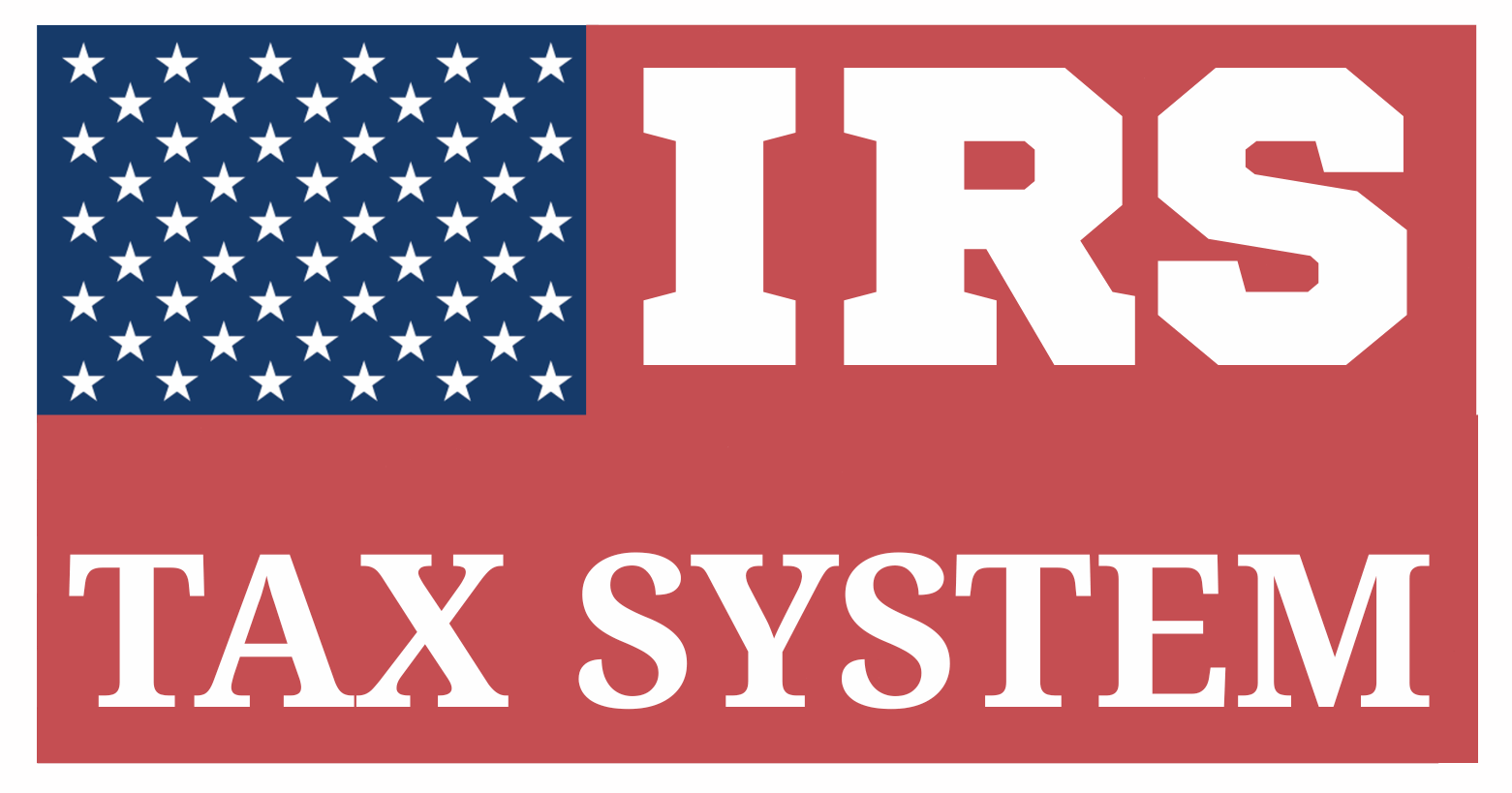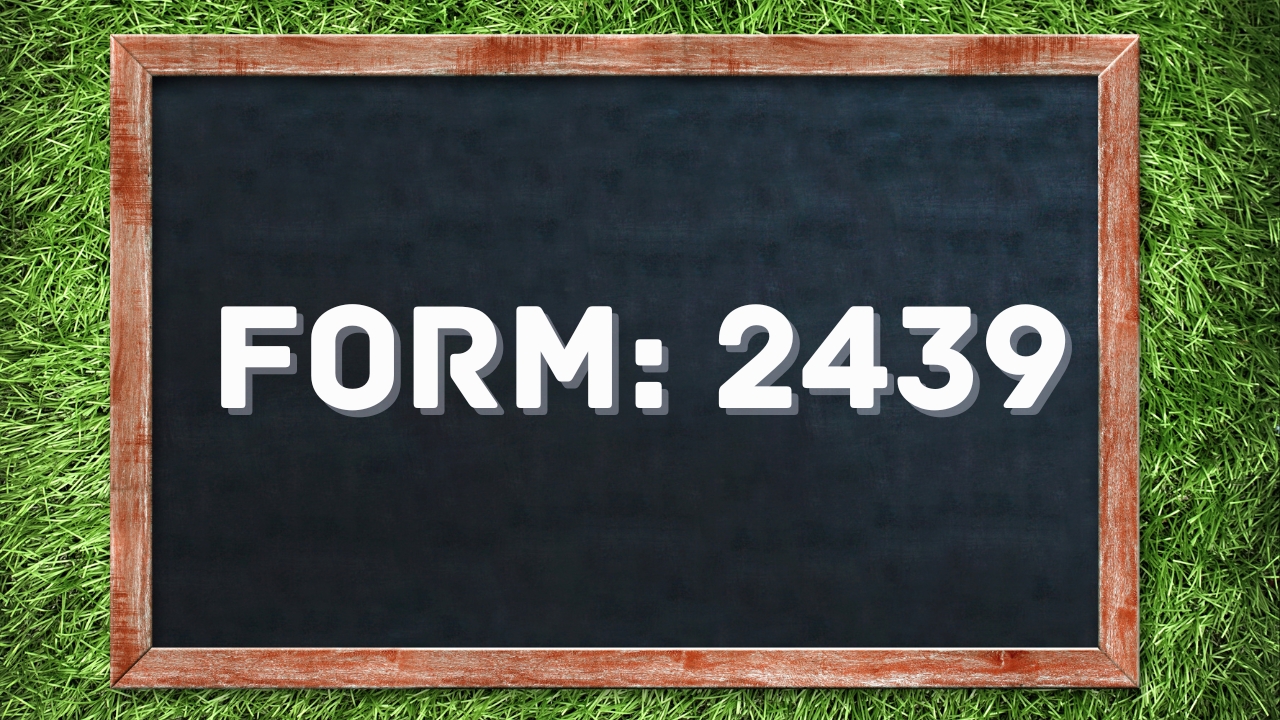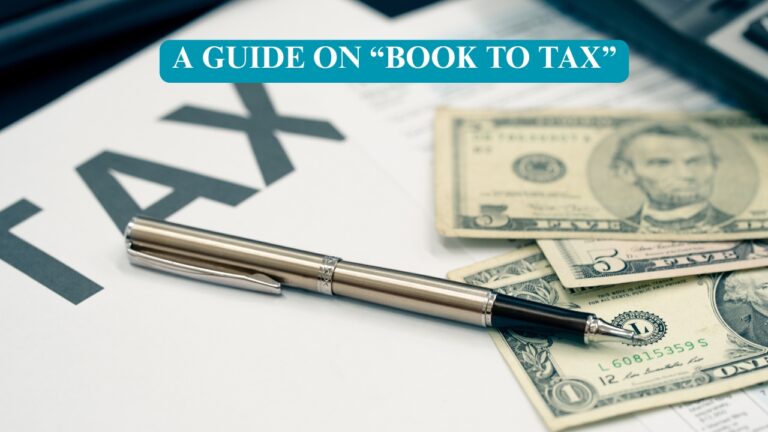Form 2439: An Excellent Write-Up
Table of Contents
Covering Detailed Overview About Form 2439

Form 2439, called “Notice to Shareholder of Undistributed Long-Term Capital Gains,” is investment trust (REIT) to report retained capital gains on which it has paid tax is issued by:
- Regulated Investment Companies (RICs), such as mutual funds, or
- Real Estate Investment Trusts (REITs)
when they retain long-term capital gains instead of distributing those gains directly to shareholders.
Although you do not receive the cash, the IRS still treats these gains as constructively received income, and you are taxed on your share. However, the mutual fund or REIT pays income tax on your behalf, and you are entitled to claim that amount as a credit on your Form 1040.
Why Did You Receive Form 2439?
You received IRS Form 2439 because you are a shareholder in a Regulated Investment Company (RIC)—such as a mutual fund—or a Real Estate Investment Trust (REIT) that has retained capital gains instead of distributing them to you directly.
Normally, when a fund earns capital gains, it distributes those to shareholders who then report the income and pay taxes. However, in some cases, the fund may retain (keep) those gains and pay the tax on your behalf. When this happens:
- The fund is required by law to report your share of the undistributed gains to you and the IRS.
- It issues Form 2439 to inform you that:
- You’re required to report this income on your tax return, even though it wasn’t distributed to you in cash
- You can claim a tax credit for the federal income tax the fund has already paid on your behalf.
In short, Form 2439 lets you know that you have taxable income from long-term capital gains that were not distributed, and it provides the details you need to correctly report this income and claim the associated tax credit.
Breakdown of IRS Form 2439
Form 2439 consists of multiple sections designed to disclose retained capital gains, taxes paid on behalf of the shareholder, and other relevant details. Each section plays a crucial role in helping you report the correct income and claim appropriate tax credits.
Part I – Shareholder and Fund Information
This section identifies:
- Shareholder’s name, address, and taxpayer identification number (TIN).
- RIC or REIT’s legal name and address.
- The tax year in which the gains were retained and taxed.
Purpose
Ensures the IRS and taxpayer know who is responsible for reporting the income and who paid the related taxes.
Part II – Undistributed Long-Term Capital Gains
This is the core of Form 2439. It includes:
- Total undistributed long-term capital gain allocated to you.
- Amount of tax the RIC or REIT has already paid to the IRS on your behalf.
- Section 1250 gain (if applicable): Represents the recaptured portion of depreciation from real estate, taxed at a higher rate
- Unrecaptured Section 1250 gain: Important for computing applicable tax rates on real estate-related capital gains.
Purpose
Notifies shareholders of undistributed long-term capital gains allocated to them by a mutual fund, RIC, or REIT—income you must report on your tax return even though you didn’t actually receive it in cash. The tax paid becomes a nonrefundable tax credit on your individual tax return.
Part III – Certification
The fund certifies that:
- The shareholder listed is entitled to this income.
- The IRS has received all necessary tax payments on the shareholder’s behalf.
Purpose
Officially confirms the accuracy and validity of the reported information.
Attachment to Form 1040
he fund must furnish Copy B of Form 2439 to each shareholder to inform them of their share of undistributed long-term capital gains and any taxes the fund has already paid on their behalf. This enables shareholders to properly report the income and claim any applicable tax credits on their Form 1040. As a taxpayer, you:
- Report the undistributed capital gain on Schedule D (Form 1040).
- Claim the tax paid as a credit on Line 13 of Schedule 3 (Form 1040).
The credit offsets any taxes you owe or increases your refund.
How to Report Form 2439 on IRS Form 1040
Step 1: Gather Key Information from Form 2439
Before you begin entering data into your tax return, it’s essential to closely examine Form 2439 and extract specific information that directly impacts your tax liability and credit. This information helps determine both the income you must report and the credit you’re entitled to claim for tax already paid by the investment entity.
Below is a breakdown of the key boxes you need to focus on:
Box-by-Box Breakdown of Form 2439
| Box No. | Label | What It Represents |
| Box 1a | Undistributed Long-Term Capital Gain | This is the taxable gain that the mutual fund or REIT retained on your behalf rather than distributing it. You must report this as long-term capital gain income on your tax return, specifically on Schedule D. |
| Box 1b | Unrecaptured Section 1250 Gain | This represents a portion of the gain related to real property depreciation. If present, this amount may be taxed at a maximum rate of 25% and must be reported separately using the Schedule D instructions. |
| Box 1c | Section 1202 Gain | This refers to gain from certain qualified small business stock. If applicable, it may qualify for a partial exclusion and should be handled carefully using IRS capital gain worksheets. |
| Box 2a | Federal Income Tax Paid | This is the creditable amount of tax already paid by the fund on the undistributed gains. Enter the credit on Schedule 3, Line 6z, of Form 1040 to reduce your overall tax liability |
| Box 3 | Total undistributed capital gains | This may match Box 1a or differ slightly depending on other fund-level adjustments. Primarily informational. |
| Box 4 | Date of undistributed gain realization | Helps identify the tax year in which the gain applies. For reporting purposes, it’s usually the year in which you receive the Form 2439. |
| Box 5 | Name and EIN of the RIC or REIT | This is the identity of the fund or trust that issued the gain and paid the tax. Record this for reference and potential IRS inquiries. |
Step 2: Report the Undistributed Capital Gain Income
You must report the full amount from Box 1a as if it were a long-term capital gain you received.
Where to report:
- If you are filing Schedule D (Form 1040):
- Enter the amount from Box 1a on Schedule D, Line 11 (“Long-term gains”).
- In Column (a), write “Form 2439”.
- Skip Columns (b) and (c), and enter the amount in Column (d).
- If you’re not required to file Schedule D, report the gain directly on:
- Form 1040, Line 7 (this may vary slightly depending on the tax year).
Note: This gain is subject to preferential long-term capital gains rates—typically 0%, 15%, or 20%, depending on your income bracket.
Step 3: Claim the Tax Credit (Box 2)
The amount in Box 2 represents federal income tax already paid by the fund on your behalf.
Where to report:
- Schedule 3 (Form 1040), Line 6d — “Other credits”
- Write “Form 2439” on the line description.
- Report the amount in Box 2 as a credit that reduces your total tax, but not below zero.
- Report this amount on Line 20 of Form 1040, where other payments and credits are listed.
If the credit exceeds your total tax due, the IRS will apply the overpayment to your refund.
Step 4: Attach Documentation
Attach Copy B of Form 2439 when submitting your tax return to the IRS.
- If filing by paper, staple Copy B of Form 2439 to the front of your tax return.
- E-filers: Follow your tax software’s instructions to upload or enter Form 2439 data electronically.
Example – Reporting Form 2439 on Form 1040
Scenario:
You received Form 2439 from ABC Mutual Fund. The form includes the following:
- Box 1a: $12,000 (undistributed long-term capital gain)
- Box 2a: $2,520 (federal tax paid at 21%)
Here’s what to do:
- Schedule D (Form 1040):
- Line 11: Enter $12,000 and label: “Undistributed capital gain – Form 2439”
- This gain is part of the amount reported on Line 16 and is carried over to Line 7 of Form 1040.
- Schedule 3 (Form 1040):
- Line 6z: Enter $2,520, labeled “Form 2439 Tax Credit”
- Line 8: Sum with additional nonrefundable credits and carry the total to Line 20 on your Form 1040
- Form 1040:
- Line 7: Include $12,000 in total income
- Line 20: Include $2,520 as part of your total tax credits
- Attach:
- Paper file: Attach Copy B of Form 2439
- E-file: Keep for your records
What About Boxes 1b and 1c on Form 2439?
Boxes 1b and 1c on Form 2439 report special types of capital gains that require separate reporting and may be taxed at different rates than regular long-term capital gains. Here’s what each means and how to handle them:
Box 1b – Unrecaptured Section 1250 Gain
What It Is:
This amount represents unrecaptured depreciation on real estate property (such as commercial buildings) that was previously claimed by the RIC or REIT. When such property is sold, a portion of the gain attributable to depreciation is “recaptured” and taxed at a maximum rate of 25%, rather than the standard 0%/15%/20% capital gains rate.
Where to Report It:
- Report this amount on Schedule D (Form 1040), Line 19, in the section labeled “Unrecaptured Section 1250 Gain Worksheet”.
- If you’re using tax software, it will walk you through the worksheet automatically.
- This amount does not go on the regular capital gains lines—it must be broken out specifically to be taxed at the correct rate.
Box 1c – Section 1202 Gain (Qualified Small Business Stock)
What It Is:
This is the gain from Qualified Small Business Stock (QSBS) under IRC Section 1202, which may be eligible for a partial or full exclusion from income—up to 100% of the gain, depending on when the stock was acquired and how long it was held.
Where to Report It:
- You may report it on Schedule D, Line 6, and also complete the “Section 1202 Exclusion Worksheet” to determine how much of the gain qualifies for exclusion.
- The excludable portion is not taxed, but the non-excluded portion is taxed as a capital gain and included in your total.
Common Scenarios Involving Form 2439
1. Mutual Fund or REIT Capital Gains Distribution
You own shares in a Regulated Investment Company (RIC) or a Real Estate Investment Trust (REIT) that retained some of its long-term capital gains and paid tax on them directly, rather than distributing those gains to you.
Form 2439 is issued to inform you of:
- Your share of the undistributed long-term capital gains (Box 1a)
- The federal income tax paid on your behalf (Box 2)
Reporting on Form 1040:
- Report the capital gain on Schedule D, usually Line 11.
- Claim a tax credit for the tax paid in Box 2 on Schedule 3 (Form 1040), Line 1 and then transfer to Form 1040, Line 20.
2. Unrecaptured Section 1250 Gain
You receive Form 2439 with an amount in Box 1b. This means part of the gain was from real estate, and the depreciation previously claimed is now subject to recapture at a higher 25% rate.
Reporting on Form 1040:
- Enter the gain on Schedule D, and complete the Unrecaptured Section 1250 Gain Worksheet (instructions are in Schedule D Instructions).
- Include the total in Line 19 of Schedule D.
3. Qualified Small Business Stock (QSBS) Gains
If Box 1c is filled, it represents gains from the sale of Section 1202 stock, which may qualify for partial or full exclusion under tax law.
Reporting:
- Report the full gain on Schedule D, Line 6.
- Complete the Section 1202 Exclusion Worksheet to determine the excludable portion.
4. Tax Credit for Taxes Paid by RIC/REIT
You’re allowed to claim the amount of tax paid on your behalf by the RIC/REIT as a credit on your tax return.
Reporting:
- Report the tax paid (Box 2 of Form 2439) on Schedule 3 (Form 1040), Line 1.
- It reduces your total tax due.
5. Filing Electronically
If you file electronically, and your Form 2439 is not supported by your e-filing software:
Reporting
- You must mail a paper copy of Form 2439 (Copy B) to the IRS.
- Keep a copy for your records.
6. Multiple Form 2439s: Reporting Aggregated Amounts
If you receive more than one Form 2439, you must aggregate the amounts for reporting purposes:
- Box 1a (Undistributed Long-Term Capital Gains): Add up the amounts from all Form 2439s and report the total on Schedule D (Form 1040).
- Box 2 (Federal Tax Paid): Add all credits and claim the combined amount on Schedule 3 (Form 1040), Line 1 as a nonrefundable credit, which then flows to Form 1040, Line 20.
Tip: Maintain a worksheet for your records that breaks down each Form 2439 received and the totals reported.
7. Overstated Tax on Form 2439: What to Do
If you believe the amount listed in Box 2 (Tax Paid by RIC or REIT) is overstated or incorrect, the IRS will not adjust it based on your claim alone.
Steps to Take:
- Contact the issuer (RIC/REIT): Request that they issue a corrected Form 2439.
- No self-adjustment allowed: The IRS will only accept an amended Form 2439 directly from the issuer—not a revision you make on your own.
- Keep correspondence: Document all communication in case of audit.
8. Amended Return Required: Form 1040-X
If you receive Form 2439 after you have already filed your federal tax return, you are still required to report the income and claim the credit.
Reporting:
- File Form 1040-X (Amended U.S. Individual Income Tax Return).
- Include:
- The undistributed capital gain as income (Schedule D).
- The tax credit from Box 2 of Form 2439 (Schedule 3, Line 1).
- Attach a copy of Form 2439 to support the information reported on your return.
Note: You generally have three years from the original return’s due date to file an amended return and request a refund.
Frequently Asked Questions (FAQs)
Do I owe tax on income I didn’t actually receive?
Yes. The IRS treats retained capital gains as income to you, even if not distributed.
Will I be taxed twice?
No. The credit in Box 2 prevents double taxation, since the RIC/REIT already paid the tax.
Can I get a refund from the credit?
Yes. If the Box 2 amount exceeds your tax due, it increases your refund or reduces your balance due.







